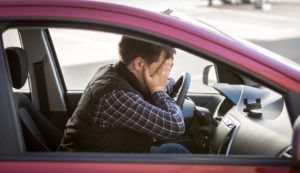 Drunk or reckless drivers have little reason to stop driving just because their license is suspended. Whether the license was scoring too many DMV points for non-alcohol-related moving violations, or because of a DUI, a suspended license does nothing to prevent a person from continuing to drive. It is not an ignition interlock device – it is just a paper trail that can affect the driver IF they are caught.
Drunk or reckless drivers have little reason to stop driving just because their license is suspended. Whether the license was scoring too many DMV points for non-alcohol-related moving violations, or because of a DUI, a suspended license does nothing to prevent a person from continuing to drive. It is not an ignition interlock device – it is just a paper trail that can affect the driver IF they are caught.
Ignition interlock devices are more effective than suspended licenses at preventing subsequent DUIs.
Statistically speaking, a drunk driver has driven under the influence of alcohol an average of 80 times before facing a DUI. Once they are caught, their driver’s license can be suspended through the DMV or administrative office that handles driver’s licenses, even before they make it into court. However, in the case of drunk driving, the influence on the decision to get behind the wheel is always made while a person is impaired by alcohol. If a person is determined to drive home and the number of drinks they’ve consumed is not a consideration, it is unlikely they will think about their suspended license, too.
In 2016, 28 percent of traffic fatalities were attributed to drunk drivers. In 2012 (the most recent year for such data), 19 percent of traffic fatalities were attributed to drivers with a suspended license. In that 2012 report, NHTSA indicates that further study into that connection based on the Fatality Analysis Reporting System (FARS) data was warranted. There is obviously a connection.
Understanding that connection is important, but it still does not solve the problem, at least where drunk driving on a suspended license occurs. In states where ignition interlock devices are required for any DUI, the number of subsequent problems is lower. A suspended license still allows the driver to make a choice, leading to dangerous situations for everyone on the roads.

 The Truth Hurts: DUI Statistics and Our Commitment to Nothing
The Truth Hurts: DUI Statistics and Our Commitment to Nothing